
Star Trek: Away Team is an isometric real-time tactics video game developed by Reflexive Entertainment and published by Activision. The game was initially released in March 2001 for personal computers using Microsoft Windows in North America. The game is set in the Star Trek universe, after the end of the Dominion War seen in the television series Star Trek: Deep Space Nine. It features a range of new characters, set on board the USS Incursion with voice appearances by Brent Spiner and Michael Dorn as Lieutenant Commander Data and Ambassador Worf, respectively. The game received mixed reviews, with criticism directed at the graphics, elements of the gameplay including the lack of any artificial intelligence, and the limited length of the game.
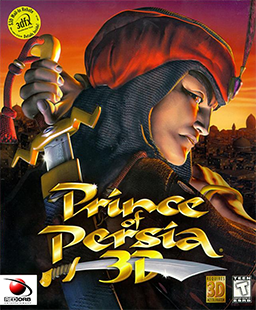
Prince of Persia 3D is a 1999 action-adventure game developed by Mindscape and published by Red Orb Entertainment for Microsoft Windows. A port for the Dreamcast was developed by Avalanche Software and published by Mattel Interactive in North America the following year under the title Prince of Persia: Arabian Nights. It is the first 3D installment in the Prince of Persia series, and the final game in the trilogy that started with the original 1989 game. Taking the role of the titular unnamed character rescuing his bride from a monstrous suitor's schemes, gameplay follows the Prince as he explores environments, platforming and solving puzzles while engaging in combat scenarios.
In video games, artificial intelligence (AI) is used to generate responsive, adaptive or intelligent behaviors primarily in non-playable characters (NPCs) similar to human-like intelligence. Artificial intelligence has been an integral part of video games since their inception in 1948, first seen in the game Nim. AI in video games is a distinct subfield and differs from academic AI. It serves to improve the game-player experience rather than machine learning or decision making. During the golden age of arcade video games the idea of AI opponents was largely popularized in the form of graduated difficulty levels, distinct movement patterns, and in-game events dependent on the player's input. Modern games often implement existing techniques such as pathfinding and decision trees to guide the actions of NPCs. AI is often used in mechanisms which are not immediately visible to the user, such as data mining and procedural-content generation. One of the most infamous examples of this NPC technology and gradual difficulty levels can be found in the game Mike Tyson's Punch-Out!! (1987).

Nightmare Creatures is a 1997 survival horror video game developed by Kalisto Entertainment for PlayStation, Windows, and Nintendo 64. A sequel, Nightmare Creatures II, was released three years later. A mobile phone version of Nightmare Creatures was developed and published by Gameloft in 2003. A second sequel, Nightmare Creatures III: Angel of Darkness, was cancelled in 2004.

The Lost World: Jurassic Park is an action-adventure video game developed by DreamWorks Interactive and Appaloosa Interactive, and published by Electronic Arts and Sega for the Sony PlayStation and Sega Saturn, respectively, in 1997. The Lost World: Jurassic Park is based on the film of the same name, which in turn is based on the novel by Michael Crichton. In 1998, a special edition of the game was released for the Sony PlayStation as a Greatest Hits title and featured several modifications to the gameplay.
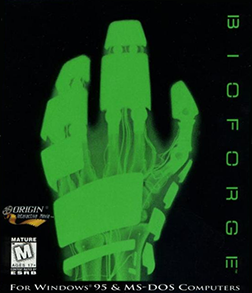
BioForge is a 1995 action-adventure game developed by Origin Systems and published by Electronic Arts for MS-DOS. Set in the future, the player controls an amnesiac cyborg trying to escape the research facility where they are being held prisoner.
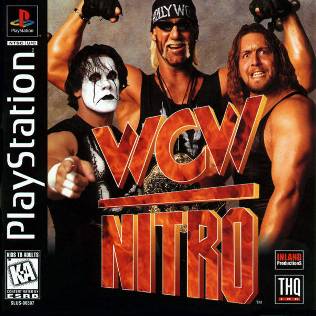
WCW Nitro is a professional wrestling video game based on the television show WCW Monday Nitro. Released by THQ for the PlayStation game console in 1998, the game featured a large roster of playable WCW wrestlers as well as full motion video clips of the television show. The game was followed by WCW/nWo Thunder, which was based on Nitro's Thursday night counterpart. Ports for Nintendo 64 and Microsoft Windows were released later in 1998 and 1999 with the updated roster featured in Thunder.

Realmz is a fantasy adventure and role-playing video game first developed and published by Fantasoft in 1994 for the Apple Macintosh as shareware. Fantasoft released a Microsoft Windows-compatible version in 1999, and a science fiction role-playing game based on the Realmz engine, titled New Centurions, in 2001. Realmz was originally written by Tim Phillips on a Macintosh IIsi; he also wrote four game scenarios, including the introductory scenario "City of Bywater". Other original scenario contributors were Jim Foley and Sean Sayrs.

Life simulation games form a subgenre of simulation video games in which the player lives or controls one or more virtual characters. Such a game can revolve around "individuals and relationships, or it could be a simulation of an ecosystem". Other terms include artificial life game and simulated life game (SLG).
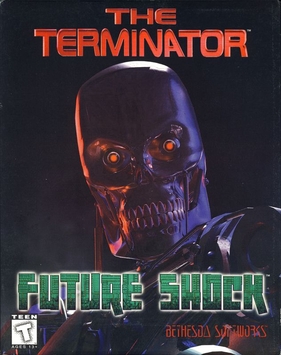
The Terminator: Future Shock is a 1995 first-person shooter video game by Bethesda Softworks based on The Terminator franchise. It received generally positive reviews. A sequel, Skynet, was released in 1996.

Star Trek: The Next Generation – Klingon Honor Guard is a first-person shooter set in the universe of Star Trek during the time of The Next Generation. The game was developed by MicroProse in 1998, using the Unreal game engine. The critical response to the title was generally positive with praise for the graphics, but mixed opinions of the level design.

Spider: The Video Game, is a 2.5D platform game developed by Boss Game Studios and published by BMG Interactive for the PlayStation. It was the only release published under the BMG Interactive label in the U.S. The player takes the role of a cybernetic spider, within which the mind of its creator, Dr. Michael Kelly, has been implanted.

Recoil is a vehicular combat tank-based Microsoft Windows video game. It involves the player piloting an experimental tank known as the "BFT" through various missions. There is a heavy influence on collecting various weapons for the BFT throughout the game. It was developed by Zipper Interactive, a subsidiary of its parent publisher, Electronic Arts, and uses the same game engine as MechWarrior 3.

Star Trek: Hidden Evil is a third-person action-adventure video game released in 1999 by Activision. It was developed by Presto Studios over the course of a year, and was specifically created for the casual gamer market. The plot followed up on the events in the film Star Trek: Insurrection, with the player portraying the character of Ensign Sovok, who works alongside Captain Jean-Luc Picard and Lt. Cmdr Data, with Patrick Stewart and Brent Spiner reprising their roles.

NBA Live 96 is the second installment of the NBA Live video game series published by EA Sports and released on November 30, 1995. The PC and PlayStation covers feature Shaquille O'Neal of the Orlando Magic, while the Super Nintendo Entertainment System, Sega Genesis and European PlayStation box covers feature a photo of the tip-off to Game 1 of the 1995 NBA Finals. PlayStation and PC versions are the first games in the series to feature 3D-rendered courts, allowing for multiple camera angles using EA's "Virtual Stadium" technology, which is also used for FIFA Soccer 96. On-court player graphics remain 2D sprites. It is also the first NBA Live game released for the PlayStation and the only game for the Game Boy. NBA Live 96 is followed by NBA Live 97.
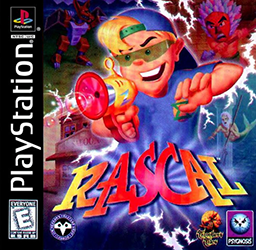
Rascal is a platform game developed by Traveller's Tales and published by Psygnosis for the PlayStation. The main character and several enemies were designed by Jim Henson's Creature Shop.

The Fifth Element is a 1998 action-adventure video game. Based on the film of the same name, it was developed by Kalisto Entertainment, and was released for PlayStation and Microsoft Windows.

Spider-Man is a side-scrolling action game developed by Western Technologies and published by Acclaim and LJN in 1994 and 1995, based on the 1994–1998 animated series of the same name. The game was released for the Sega Genesis and the Super Nintendo Entertainment System (SNES). The two versions of the game have the same basic story but have gameplay, level, and enemy differences.

Creatures is an artificial life simulation packaged as a video game developed by British studio Creature Labs for Windows, and was ported to Macintosh, PlayStation, and Game Boy Advance. It is the first game in the Creatures series.

PegLeg is a video game developed by High Risk Ventures and published by Changeling Software for the Macintosh.



















